AlexPro9500/iStock/GettyImages
Tilapia's mild flavor and delicately pale flesh are suited to a wide range of cooking methods, but it does have limitations. Like most low-fat fish, it has little protection against overcooking, and as a result, it often comes out dry. One way to counter this tendency is to buy whole, bone-in tilapia. The skin and bones help the fish retain moisture as it cooks, and tilapia's uncomplicated bone structure makes the fish easy to portion and serve after cooking.
Getting Started
Bone-in tilapia are available in both fresh and frozen forms, so choose whichever is more convenient for you. frozen tilapia are usually scaled so they're ready to cook as soon as they thaw. Fresh tilapia are typically cleaned but not scaled. You can do it yourself at home, or ask your fishmonger to scale them for you. In the United States, most tilapia are sold at weights of 1 1/4 to 2 pounds, a size that will feed two to three people as a light meal or up to four it it's served with hearty side dishes. Athletes and other big eaters might consume a whole one.
Baking Whole Tilapia
Baking whole tilapia in a hot oven is a largely hands-free technique that gives you time to attend to your side dishes. Wipe the tilapia inside and out to remove any loose scales or blood spots, then season the cavity and fill it with fresh herbs or lemon slices. Brush or spray the skin with oil, and season it with salt and pepper. Some cooks cut a few diagonal slashes into the sides of the fish, filling them with herbs or spices. Bake the tilapia at 400 to 425 degrees Fahrenheit on a sheet pan or in a casserole dish, at approximately 10 minutes for each inch of thickness, until the flesh can easily be flaked away from the backbone.
Grilling Whole Tilapia
Delicate white fish such as tilapia aren't usually good choices for grilling because they break easily when they're turned, and overcook easily. Cooking them with the skin and skeleton intact counters both of those problems. Wipe the tilapia dry, and spray or brush the skin with oil. Season the fish inside and out with salt and pepper or your favorite spice rub, then place them on your preheated grill. Cook the fish for 5 to 7 minutes on each side, until the skin is crisp and the meat can easily be lifted away from the backbone.
Pan-Frying Whole Tilapia
If crisp skin is one of your favorite things about whole fish, no cooking method does it better than pan-frying. Season your tilapia inside and out with salt and pepper, then dredge them lightly in flour or corn flour and shake off the excess. Pour a small amount of oil into a large, hot skillet, and gently lay your first tilapia in the oil. Cook it on each side for 5 to 7 minutes, until the skin is crisped and brown and the flesh can easily be lifted way from the backbone. For multiple tilapia, use separate pans or keep the first ones warm while you prepare the rest.
Serving Whole Tilapia
However you cook the tilapia, separating it from its bones is a simple process. Slide a fish server or butter knife down the spine, separating the thick part of the fillet from the backbone. Gently lift and flip the fillet from the skeleton, and the rib bones -- still connected to the spine -- will pull out of the tender, cooked flesh. Turn the fish over, and repeat the process on the second side. Remove any stray ribs that might have remained in each fillet, then portion and serve the fillets.
Related Articles
How to Cook Seasoned Keta Salmon

How to Cook Mackerel in an Oven

How to Cook a Fresh Perch
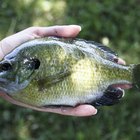
How to Cook Bluegill on the Grill
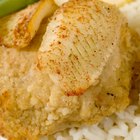
How to Cook Stuffed Tilapia
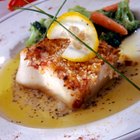
How to Pan Sear Sea Bass

How to Cook Panfish in the Oven
How to Cook Cobia

How to Cook Walleye by Broiling

How to Cook Steelhead Trout
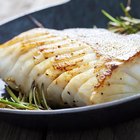
How Do I Pan Fry Fresh Fish With a ...
How to Cook Atlantic Cod Fillets
How to Cook a Turbot in the Oven

How to Cook Fresh Brook Trout
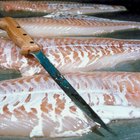
How to Grill a Cod Fish

How to Cook Flathead

How to Cook Saba Fish
How to Cook Fried Flounder Fillets

How to Cook Sauteed Perch Fillets

How to Cook Pickerel in the Oven
References
- Fine Cooking: Tilapia
- On Cooking: A Textbook of Culinary Fundamentals; Sarah Labensky, et al.
Writer Bio
Fred Decker is a trained chef and prolific freelance writer. In previous careers, he sold insurance and mutual funds, and was a longtime retailer. He was educated at Memorial University of Newfoundland and the Northern Alberta Institute of Technology. His articles have appeared on numerous home and garden sites including GoneOutdoors, TheNest and eHow.